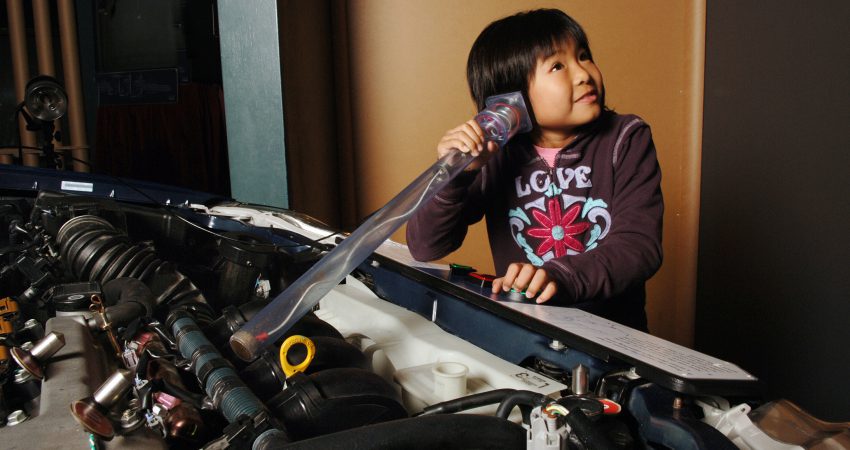
By Savannah Benally & Kerri Wingert - March 2014
PAPER CITATION
Hudicourt-Barnes, J. (2003). The use of argumentation in Haitian Creole science classrooms. Harvard Educational Review, 73(1), 73–93.
This article uses critical ethnography and analysis of student talk to refute claims that Haitian children are not fully engaged in science classrooms, particularly claims resulting from the University of Miami’s comparisons of cultural groups’ performance on science reasoning tasks (Lee & Fradd, 1996; Lee, Fradd, & Sutman, 1995). Hudicourt-Barnes seeks to enrich the dialogue about cultural difference and performance in science by providing examples from a bilingual science classroom. This study focuses on students’ use of bay odyans, a cultural tradition that Hudicourt-Barnes posits is naturally scientific because of the way it rapidly includes and refutes opposing viewpoints. In Haiti, the author demonstrates, public spaces such as bus stops and plazas often serve as forums for spirited diskisyon, a style of bay odyans specifically committed to logical argument, often about contentious topics such as religion, soccer, or politics. To an American, these discussions may seem impolite or ill-natured, but in Haitian culture they are normative and punctuated by frequent laughter. They proceed logically to address and reconcile divergent viewpoints. Children are immersed in this lively form of discourse from a young age.
Hudicourt-Barnes noticed that students in her class readily engaged in diskisyon if given the opportunity. She sees bay odyans as an example of how ways of thinking and speaking that are characteristic of a specific culture can serve as the basis for science talk, particularly for argumentation.
Findings
First, Hudicourt-Barnes shows how changing the power structure in her classroom led to increased student engagement. In traditional classrooms, the teacher has power over what is spoken: calling on students, lecturing, making sure that students speak in turn, and so on (Cazden, 2001). However, with her Haitian Creole students, Hudicourt-Barnes stepped out of the role of academic authority and took part in “finding out” alongside students. When she encouraged more community-centered talk, she says, students were more lively and engaged.
Second, overt use of diskisyon led to increased scientific argumentation among the students. Hudicourt-Barnes found that when she capitalized on children’s prior knowledge and experience by using bay odyans, students showed stronger argumentation skills. For example, in an investigation of types of sound waves caused by a drumbeat, Hudicourt-Barnes asked, “Why can’t you see the sound wave with your eyes?” When one student responded, “Because it is invisible,” a classmate jumped in with “It is invisible? And what am I?” In this way, the second student challenged his classmate to clarify what he meant while simultaneously amusing his class. The discussion continued with up to seven students participating, all seeking to provide evidence and challenging their classmates to do the same.
Implications for Practice
This article contributes toward understanding how different types of talk contribute to engagement with the scientific practice of argumentation. This work encourages practitioners at all levels of education to take a closer look at the ways students and their families talk and use evidence to foster understanding. Differences in the ways talk is structured lead to different methods of problem solving, sharing ideas, and playing the role of a “good student.” Like Hudicourt-Barnes, instructors should be attentive to the larger funds of knowledge that students bring that are encapsulated in their language practices, beyond simply the syntax or vocabulary of their language.
This research also encourages us to be critical consumers of research that suggests that groups of students are “less capable” than other groups, since all students bring to school ways of knowing from their specific cultures.
Theoretical Basis
This work contributes to the growing body of work that explains how people learn in cultural terms, which should not be evaluated solely by their difference to Western, mainstream science. Hudicourt-Barns uses discourse analysis to make claims about ways of knowing and thinking that are particular to a specific culture. Furthermore, this culturally sensitive tradition of education and research believes that language use mediates learning. This article arises from the research done through the Chéche Konnen Center for work in Haitian bilingual classrooms through the Technical Educational Research Center (TERC), which includes work on bilingual learners in science done by Hudicourt-Barnes’ collaborators, Rosebery, Warren, and Conant (1992).
References
Cazden, C. B. (2001). Classroom discourse: The language of teaching and learning (2nd ed.). Portsmouth, NH: Heinemann.
Lee, O., & Fradd, S. (1996). Interactional patterns of linguistically diverse students and teachers: Insights for promoting science learning. Linguistics and Education, 8, 269–297.
Lee, O., Fradd, S., & Sutman, F. (1995). Science knowledge and cognitive strategy use among culturally and linguistically diverse students, Journal of Research in Science Teaching, 32, 797–816.
Rosebery, A. S., Warren, B., & Conant, F. R. (1992). Appropriating scientific discourse: Findings from language minority classrooms. The Journal of the Learning Sciences, 2(1), 61–94.




